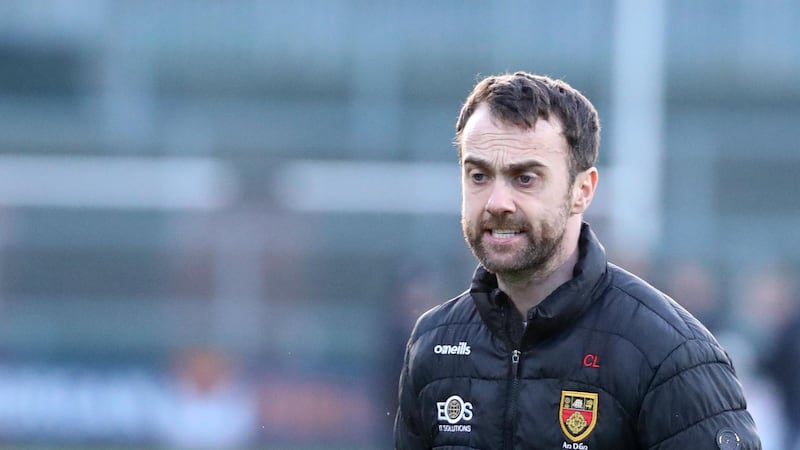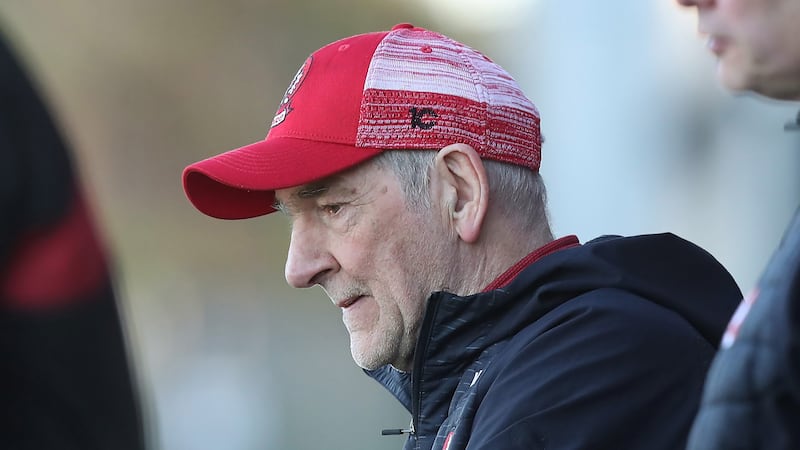THE question: is the standard of football or hurling at club level across any county reflected in the standard, or fortunes, of the county teams in the respective codes?
The obvious answer, you would presume, is that there is surely a direct correlation between both. As I watched the various recent club finals on TG4, a limited insight was gained to how strong the competition is in the respective counties. I have attended a few club championship games in Down and, overall, many people would agree that the general standard is extremely poor.
Kilcoo easily ran away with the championship again this year, winning the final by 10 points against a young and emerging Clonduff side. The same Kilcoo team easily put Burren away in the semi-final by five points in a game they never really looked like losing.
They have now won five club championships on the trot without being tested in any game. Despite this fact, the county team would not be coming down with Kilcoo players, with the Magpies benefiting from a very dedicated collectives who would rather die with their boots on than lose a game for their club.
In Tyrone, we saw a draw in a very competitive final. I followed previous rounds and you never felt that there were any real runaway mismatches. The same is the case in Donegal (from distant observation). In Armagh, the mighty Crossmaglen were beaten for only the second time in 20 years. With the list of absentees and players injured, they can count themselves unlucky to be out of the championship.
However, it is good for football in Armagh that a new winner will emerge for the first time since Pearse Og split Crossmaglen’s hegemony in 2009. It will help breed more competition internally which has been a huge area of concern for many years. Good club players outside Crossmaglen, who would normally take themselves Stateside for the summer, may consider hanging around in the future.
The same applies to any county where one club is dominating a championship year in, year out. Domination in any sport is not good. It is not good for the game, supporters or, in this case, the county teams. A quick look to the roll of honour at All-Ireland club level in the last 10 years reads; Dublin (4), Armagh (3) and Antrim, Galway and Roscommon all boasting one Andy Merrigan Cup apiece.
You could say that, at provincial level, neither Armagh nor Antrim have used their respective wins to catapult or convert this domination into the inter-county team. At the very least, Galway and Roscommon have made a fist of it. Each county team has had at least a Connacht title winner along the way within both counties in recent years.
Armagh should be doing better over the last 10 years at inter-county level. A county with Crossmaglen’s history and mentality should be contributing more on this stage. Why this is not the case is worth investigating. Dublin (again) seem to be leading the way most recently, a case in point now emerging with four club titles in the last 10 years from three different winners.
Prior to 2007-08, you would have to go back to 1994-95 to find a Dublin winner of the All-Ireland club title in Kilmacud Croke’s. Whether this was coincidental or not, Dublin also won the All-Ireland senior title for the first time in many years in 1995. Too simplistic? Maybe so.
Take Dublin’s All-Ireland titles - four of the last six. In the last 10 years, the county have been represented by All-Ireland-winning club teams, Ballyboden St Enda’s, St Vincent’s (twice) and Kilmacud Croke’s - three different teams. Therefore, you could say that there is a direct correlation between county success and the absence of domination of club championships by any team - three different club team in this instance winning an All-Ireland title.
Indeed, on the theme of Dublin, Ballymun Kickham’s were a score away from winning in 2013 against Roscommon opposition which would have made it four different teams. This was not the case in Armagh when Crossmaglen breezed through their county titles, and the same also for St Gall’s of Antrim.
Mayo being Mayo have been represented in two of the last three club finals by Castlebar Mitchel’s only to lose each one. Some things never change, even at club level. In most counties, the club team and club player are the poor relations. It is a case of all resources being thrown at the county manager and set-up.
Club leagues and championships are run off as quickly as possible, often hanging on the agreement of the county manager. It is a common formula which has shown to provide disastrous results and cases of in-fighting. I think many county boards are perhaps, with the best intentions, throwing good money after bad year in, year out at a county team which simply does not have the players to meet such high expectations.
The competition at club level in the county is just not there. The standards at club level are just not good enough. In addition, the gulf between successful clubs and less successful rivals in the same division and at the same level of club championship - be it junior, intermediate or senior - is just too great.
Some years ago, English soccer had a cap on the maximum amount of foreign-based players any one team could field or hold in their panel. Scottish, Welsh and Irish players all fell under British Isles rule, thus not classed as ‘foreign’. In the Premier League age, EU law meant this was no longer considered enforceable.
While I would not be an expert on these particular rules, clubs have had to sign up to a re-instatement of kind with regard to capping non-EU players, the idea being to improve the standard of player and provide more opportunity for the home-grown talent. I think the level of investment in a county team seems excessive. The return on investment is poor when you take in a season’s results. There is no denying that it is your shop window, not to mention that it can be a main source of income if you are successful.
Overall, though, the money would be better spent doubling the availability of qualified, well-educated coaches to all clubs in the county. It would be better spent on improving four or five club facilities in any one year. It would be better spent on trying to ensure that the GAA retain their best teenage talent instead of losing players to Australian Rules or soccer or rugby.
Improving the standard of club football is the key to county success, ensuring strong competition among a number of teams and ensuring domination is minimised. Obvious stuff, you would think. Unfortunately, though, we still throw money at the county team and expect miracles.
All it takes is one look at the club roll of honour. The only caveat is the county with a single dominating club. However, you will not hear them complaining.








